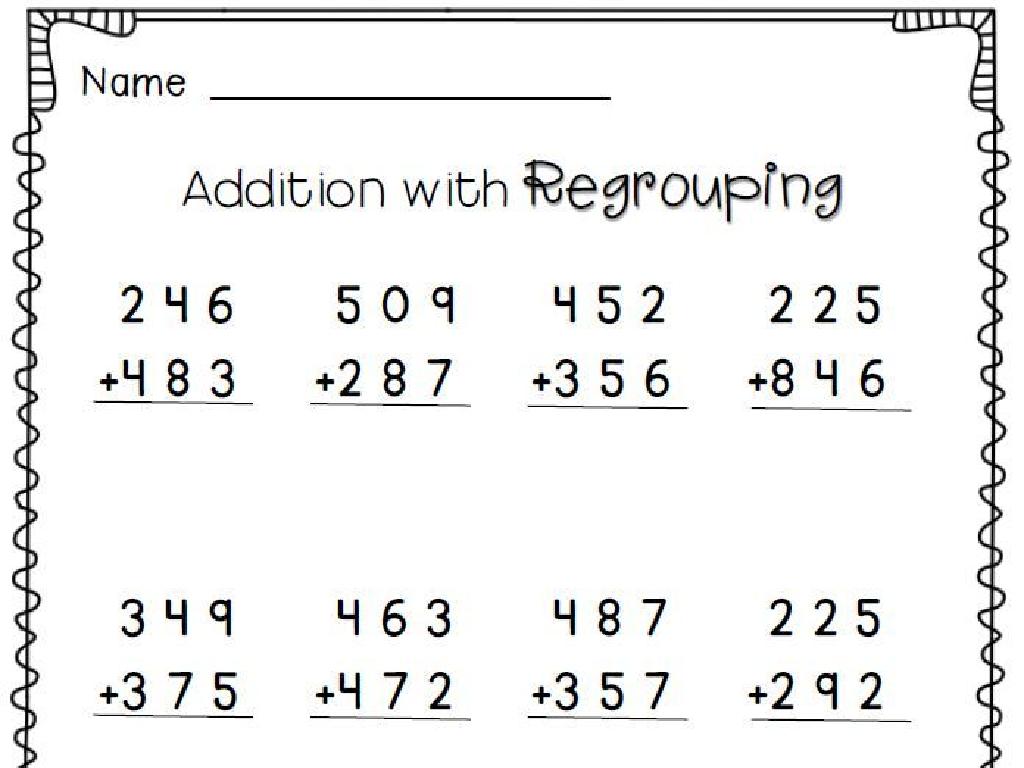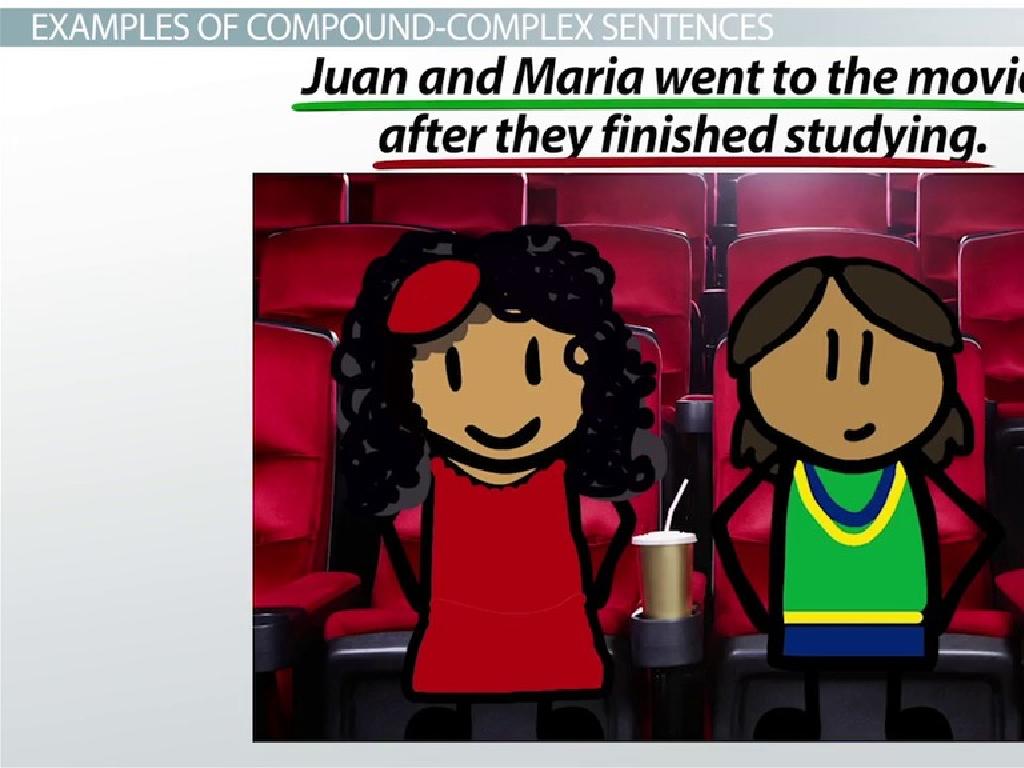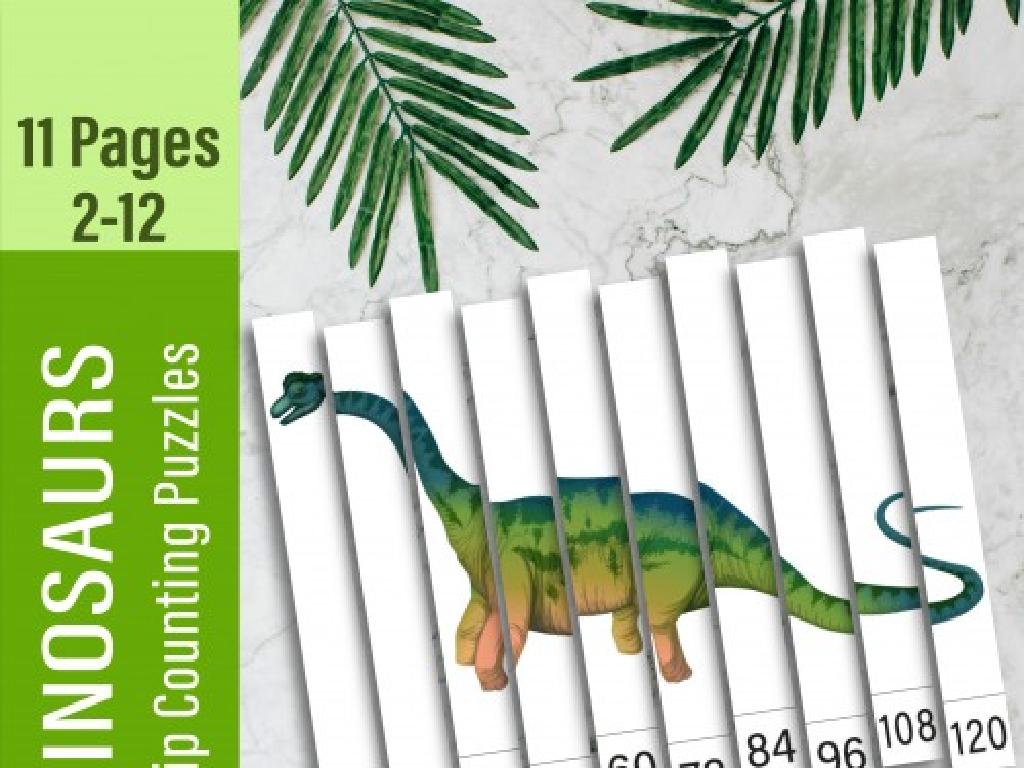Calculate Velocity, Distance, And Time I
Subject: Science
Grade: Eighth grade
Topic: Chemical Reactions
Please LOG IN to download the presentation. Access is available to registered users only.
View More Content
Chemical Reactions: Rates and Effects
– Understanding chemical reactions
– A process where substances change into new ones.
– Role of velocity, distance, and time
– These factors influence how quickly reactions occur.
– Real-life chemical reaction examples
– Combustion in engines, photosynthesis in plants.
– Analyzing reaction rates
– Use rate equations to calculate reaction speed.
|
This slide introduces the concept of chemical reactions, focusing on the importance of velocity, distance, and time in understanding how these reactions occur in various environments. Emphasize that chemical reactions are transformations resulting in the creation of new substances with different properties. Discuss how the rate at which these reactions occur can be affected by various factors, including the velocity of reactant particles, the distance they travel, and the time they interact. Provide relatable examples such as combustion in car engines or photosynthesis in plants to illustrate these concepts. Encourage students to think about how these factors play a role in everyday chemical processes and prepare them to delve deeper into calculating reaction rates using rate equations.
Understanding Velocity in Motion
– Define velocity
– Velocity: speed in a specific direction
– Speed vs. velocity
– Speed is scalar; velocity is vector with direction
– Velocity formula
– v = d/t, where v is velocity, d is distance, t is time
– Units of velocity
– Common units: meters per second (m/s), miles per hour (mph)
|
This slide introduces the concept of velocity, a fundamental aspect of motion in physics. Velocity is defined as the rate at which an object changes its position in a specific direction, distinguishing it from speed, which does not involve direction. Emphasize the vector nature of velocity, which includes both magnitude and direction, compared to speed, which is scalar and only has magnitude. The formula for calculating velocity is velocity equals distance divided by time. Ensure students understand how to rearrange the formula to solve for different variables. Discuss the units of velocity, such as meters per second or miles per hour, and how they are used in real-world contexts. Provide examples to illustrate these concepts, such as a car traveling north at a certain speed, to help students grasp the difference between speed and velocity.
Calculating Distance in Chemical Reactions
– Distance: space traveled by particles
– Measuring distance in reactions
– Use rulers or sensors to measure particle travel
– Distance formula: d = v × t
– d represents distance, v is velocity, t is time
– Common units of distance
– Meters (m), centimeters (cm), millimeters (mm)
|
When discussing chemical reactions, distance can refer to the space traveled by particles during a reaction. Measuring this distance can involve using rulers or advanced sensors in a lab setting. The distance formula, distance equals velocity times time, is a fundamental concept that applies to particle movement in reactions. Understanding the units of distance, such as meters, centimeters, and millimeters, is crucial for accurate measurement and reporting in scientific experiments. Encourage students to practice converting between units and applying the distance formula to hypothetical scenarios in the context of chemical reactions.
Understanding Time in Chemical Reactions
– Time’s impact on reactions
– Time affects reaction rate: faster or slower
– Accurate time measurement
– Use clocks or stopwatches for precision
– Time formula application
– Calculate time by dividing distance by velocity
– Time units in science
– Seconds (s), minutes (min), hours (h)
|
This slide aims to explain the concept of time as it relates to chemical reactions. Time is a crucial factor in determining the rate at which reactions occur; some happen almost instantaneously, while others may take years. Accurate measurement of time is essential in experiments to ensure reliable results. Introduce the formula for calculating time (time = distance/velocity) and explain how it can be applied in the context of reaction rates. Discuss the standard units of time used in scientific measurements, such as seconds, minutes, and hours, and how they can be converted from one to another. Provide examples of reactions with different time scales to illustrate the concept.
Calculating Reaction Kinetics
– Velocity of reaction products
Velocity is rate of product formation, e.g., mol/L/s
– Distance traveled by particles
Distance a particle moves in the medium during reaction
– Time for reaction completion
Time taken from reactants to products, e.g., seconds or minutes
– Practice with examples
|
This slide aims to provide students with a clear understanding of how to calculate various aspects of reaction kinetics, such as velocity, distance, and time. Start with explaining the concept of velocity in the context of reaction products, using units like moles per liter per second to quantify the rate of product formation. Then, discuss how to determine the distance a particle travels within the reaction medium, which can be related to diffusion rates. Next, cover the calculation of the time it takes for a reaction to go from start to completion, which can involve understanding reaction rates and conditions. Provide practice problems for each concept to reinforce learning, ensuring that students can apply the formulas and concepts to real-world examples.
Class Activity: Reaction Race
– Divide into groups for a chemical reaction
– Measure reaction completion time
– Calculate velocity of a reactant
– Use formula: velocity = distance/time
– Discuss distance (concentration) effects
– Higher concentration may speed up the reaction
|
This activity is designed to help students understand the concepts of velocity, distance, and time within the context of chemical reactions. By working in groups, students will perform a simple chemical reaction, such as combining vinegar and baking soda. They will measure the time it takes for the reaction to complete, which will involve observing a visible change, such as the cessation of bubbling. Students will then calculate the velocity of one reactant using the formula velocity = distance/time, where ‘distance’ will be metaphorically represented by the concentration of reactants. Finally, students will discuss how varying the distances, or in this case, the concentrations of reactants, can affect the time it takes for a reaction to complete and the velocity of the reactants. Possible variations of the activity for different groups could include using different concentrations of vinegar, measuring the rate of gas production, or using temperature as a variable.
Conclusion: Velocity, Distance, and Time in Reactions
– Recap: Calculating velocity, distance, time
– Use formulas: velocity = distance/time, distance = velocity x time, time = distance/velocity
– Significance in chemical reactions
– Understanding rates of reactions and molecular movement
– Encourage curiosity and questions
– There are no bad questions, all curiosity is welcome!
– Review key formulas and concepts
– Revisit the formulas and apply them to example problems
|
As we conclude, reiterate the formulas for calculating velocity, distance, and time, and their interdependence. Emphasize the importance of these concepts in understanding the rates at which chemical reactions occur, which is crucial in the field of chemistry. Encourage students to ask any lingering questions they may have, fostering an environment of curiosity and learning. Review the key formulas and concepts with a few example problems to ensure students are comfortable with the material. This will help solidify their understanding and prepare them for more complex topics in chemistry.






